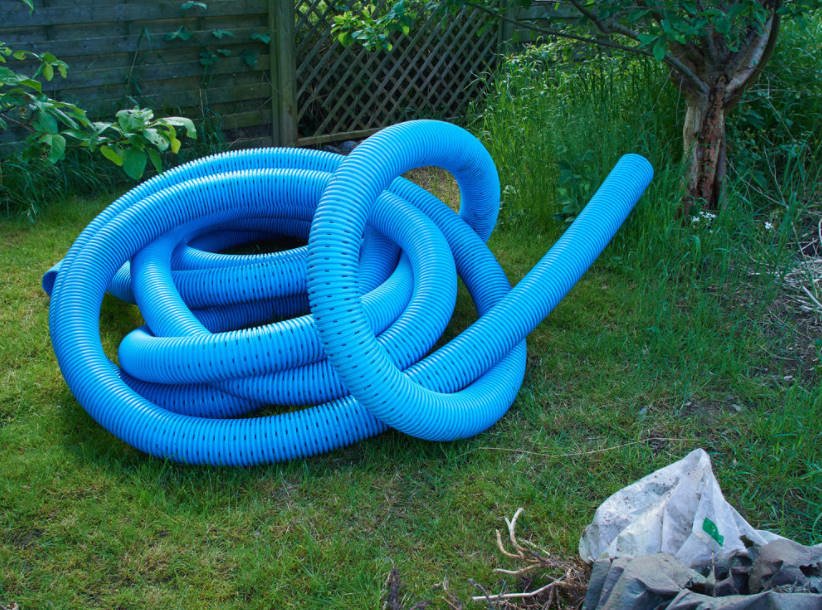
Our country mansion located in a variety of areas. Someone the consequences of any shower immediately disappear, and say, as water in the sand. Because the soil of the site is really sandy. And to other landowner even a small rain for a long time reminds of itself pools.
If the water in your area is more than we would like, or the past rains and melt water in no hurry to leave the territory of the cottage, you should think not only about buying rubber shoes for the whole family, but also about the drainage system of the site.
In previous publications, I have considered the General principle of artificial water removal system and the possibility of surface drainage, as well as various ways of decorating drainage grooves.
In this material you will find information about what to do if the hydrological situation of the site is more complex and surface drainage can not do. That is, the groundwater level is high, and the soil is clay, layered and does not pass water.
Deep drainage
The name “deep” speaks for itself: the design of the drainage system are located at depth, underground. Purpose and causes of deep drainage device can be different:
- an alternative to the surface, if you do not want or do not have the opportunity to place on the section of the ditch, even very decorative;
- complex hydrological conditions, that is, one surface drainage can not do;
- in the construction. If the groundwater level at the site is located at a depth of less than one and a half meters from the soil surface, when laying the Foundation drainage is required.
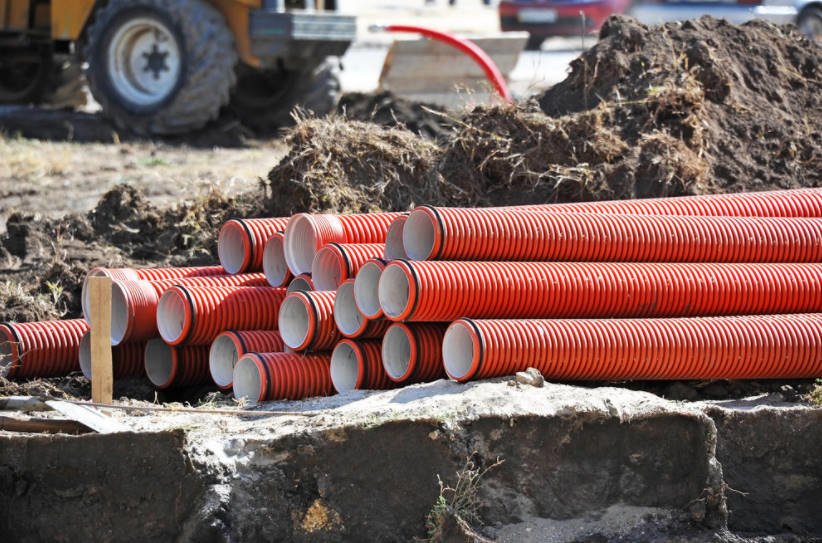
Deep drainage device is a part of large-scale construction and improvement works
The device of deep drainage is connected with large-scale earthworks and requires thorough calculations. Drainage system is laid underground drainage pipes (drains) or other structures, for example, drainage tunnels, trenches, pillows, mats.
The choice of designs, depth of laying and frequency of arrangement of separate elements of system depends on conditions on a concrete site: quantity of water, permeability of the soil, drained objects. The site drainage system can be combined when deep drainage is combined with surface drainage.
In addition to drainage pipes and trays of different materials, deep drainage can be performed in the form of trenches filled with filtering materials (gravel and rubble), without the use of drainage pipes. On top of these trenches is laid the soil.
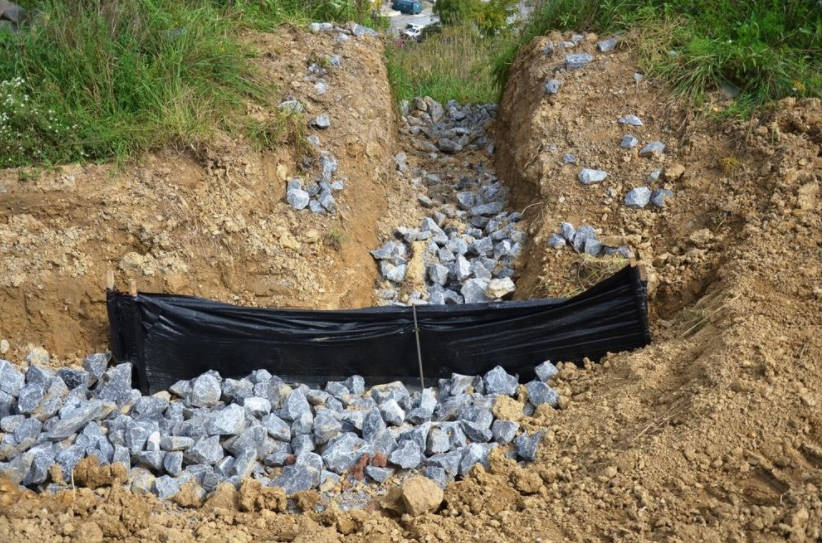
Trench covered with gravel
Depending on the drainage needs of a particular area, there are two types of drainage systems:
- local, arranged for the removal of water from individual objects: buildings, roads and the like;
- General, used to lower the groundwater level in the vast territory of the entire site.
And closed (deep) drainage systems may differ in purpose.
Shut-off drainage
An example of a specialized device for the removal of excess water can be cut-off drainage. Its purpose-to cut off the flow of groundwater from the site or buildings.
It is necessary if your site is located on a steep slope. Cutting-off drainage will reduce the washout of the fertile soil layer and soil erosion. And in a situation where there is a pond above the site, the device of such drainage will reduce the zone of strong waterlogging formed in the lower part of the slope.
The drains in this case are laid perpendicular to the slope. At the boundaries of the site they are connected to drainage pipes laid parallel to the slope of the terrain and diverting the collected water to the lower part of the site or its territory.
The cut-off drainage can have ” T ” – shaped form. The number of cross-sections depends on the degree of moisture and the length of the slope.
Drainage of retaining walls
Landscape design, applied on sloped areas require a drainage side pressurization. If the retaining walls are located across the slope, drainage can be combined with a cut-off drainage device.

Surface drainage of retaining wall
From the outside it is advisable to add it to the surface drainage, which further prevents erosion of the base of the structure.
Drainage over a large area
If a large area is to be drained, a drainage plan is required. The scheme of arrangement of drains and grooves, drainage wells and absorbing capacities is an integral part of the General plan of construction and improvement of the site. Planning of drainage system will allow taking into account the peculiarities of the relief, the location of buildings and structures, communications, planned plantings and their water requirements, irrigation systems, etc.
Therefore, the frequent recommendation of visit drainage “herringbone”, “grid” or other scheme are meaningless without taking into account the specific characteristics of your site — existing or projected.
Drainage during Foundation construction
Competent drainage of the construction site will not only save you from raw basement, but also will save the construction of the Foundation from damage. From the influence of moisture, the lower part of the Foundation is gradually destroyed, and the upper, soaking in the place of the Foundation wall outlet from the ground, in winter undergoes multiple cycles of freezing-freezing.
One waterproofing problem can not be solved, so you need to take away excess water from the structures. So, it is necessary to talk in more detail about drainage during Foundation construction. As well as other components of a drainage system, works on elimination of a moisture from the base demand design taking into account features of a relief, a ground on a building site, a construction of the base. There are three types of drainage of buildings.
Wall drainage
Wall drainage is effective for clay and loamy soils. It consists of drainage pipes laid along the perimeter of the building, and gravel and crushed stone backfill. The distance from the walls of the house to the banks is determined by the width of the supports of the Foundation and the size of observation wells. The embedding depth of the pipe at the device wall drainage is determined by the depth of the Foundation drains are placed above the base.
If the house has a basement, wall drainage is below the floor of the basement, but above the base of the Foundation. This system can be combined with storm water to save money. In this case, it is necessary to calculate the diameter of the drainage pipes, taking into account the stormwater drainage, so that their size meets the accepted volume of water.
Annular drainage
If you are planning to build a building with a deep basement or, conversely, completely without a basement, you have on the site saturated with water sandy soils or loams, there are close located pressurized groundwater — in all these cases, it is advisable to arrange a circular drainage system. It can be an independent drainage option of the Foundation or be used in addition to wall.
The use of a tandem of wall and annular drainage is reasonable in the case of heterogeneous composition of soil at the construction site.
Circular drainage is also convenient for a group of buildings located nearby, because the distance between the drainage pipes and the wall of the house when the ring system can be done much more than in the wall drainage — up to 8 meters. Therefore, the annular drainage can bypass several buildings. Placement of drains at a distance of more than 8 meters from the buildings is undesirable, as the efficiency of the drainage system is reduced.
At the device of a circular drainage drains place below the base of the base.
Formation drainage
Formation drainage is another type of drainage used in the construction of buildings and structures. Its purpose — the removal of high-standing groundwater from the pit to the aquifer having a layered structure, not washed out the Foundation subsequently.
At the device of formation drainage on a construction site, in a ditch the sandy pillow with a ramming falls off. The thickness of the layer of sand — not less than 400 mm. If there is a need and possibility, under the sand cushion is laid geotextiles.
In this dumping gravel arranged channels depth of not less than 200 mm, the Channels are parallel and are arranged in the direction from the center to the walls of the building. The distance between the channels is from 5 to 12 meters depending on the size of the structure. In the perpendicular direction with the same pitch made gravel mounds, cross-section having a prismatic shape.
Reservoir drainage necessarily hydraulically connected with the outer wall of the drainage system.
It is desirable to plan and make the device of a drainage of the base at the zero stage of construction because after the end of construction earthwork will be or impossible (as in the case with a formation drainage), or are difficult and financially more expensive. Perhaps, the only exception is circular drainage, which is located at some distance from the buildings, so it can be performed after the construction works.
Materials for drainage
Traditionally, coarse-grained sand, gravel and crushed stone of different fractions are used for the drainage device. To reduce the penetration of soil particles into the drainage filter backfilling is done on a layer of geotextile.

Filling of rubble in the drainage trench
In addition to natural filtering materials, today synthetic filters are widely used, specially designed for such purposes and are often more functional and comfortable. But more expensive. An example of such products are drainage structures, which are a ready system of pipes with holes, synthetic filters and geotextile cover.
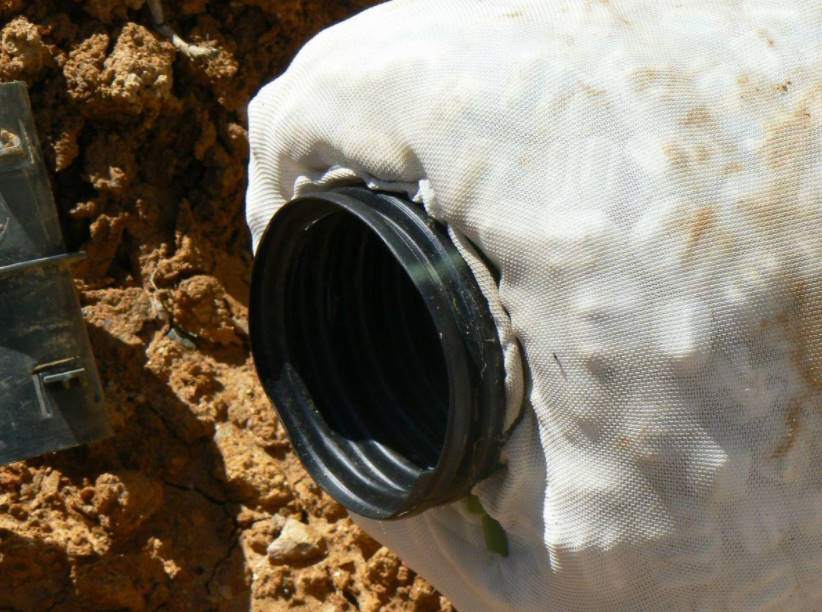
Softrock Drainage
The main advantage of using such systems is ease of installation. The designs are lightweight, one section is free to raise one person. The three-meter segment of the ready-to-install product weighs only about 15 kilograms. This pipe will replace the backfill of more than a ton of rubble. Connection couplings are included.
Installation of the entire system can be done independently, without the involvement of machinery and importation of cubic meters of gravel. Another advantage is that factory-made drains with filter filling are more reliably protected from silting.
Drainage mats
In addition to drainage pipes of various designs, when looking for materials and technologies, you can pay attention to another synthetic product — drainage mats.

Drainage Mat
Drainage Mat is a three-dimensional plastic mesh of different thickness, enclosed between two layers of geotextile. Modern composite material is a good alternative to dust and rubble. It is light, easy to install and more protected from the main problem of drainage systems — silting.
Drainage tunnels and drainage fields
More large — scale elements of the drainage system are drainage fields. They are used to create drainage of large areas, for example, filtration fields after septic tank. For their device, you can use the good old methods — drainage gravel pillows and pipes, and you can — modern technological solutions.
Self-made drainage structures
Technologies have stepped far ahead and do not stand still, manufacturers are constantly working on the development of new designs: lighter, easy to install, durable. However, the achievements of ancestors are also not forgotten and today are used along with cutting-edge materials.
In fact, the purpose of drainage filters-the creation of a more permeable medium for water on the one hand, and violation of capillarity — on the other. The water moves with the help of gravity, it flows down. Up it can only be accessed through a structure of small channels — capillaries.
Still paid attention that in sandy soil (well drained structure) the water goes easily, and dense clay can stand a lot of hours. Therefore, the introduction of crushed stone, gravel or sand backfill makes the soil easily permeable to water coming from above (for example, rain), and becomes an obstacle to groundwater rising from below.
To create a drainage system, you can use any materials that will provide high permeability of the soil and violate capillarity: construction debris, broken glass, plastic bottles and so on.

Broken brick for backfilling drainage trenches
One of the ways of self-drainage device-as drains used bundles of long straight branches . Material for their creation remains a lot when clearing from the thickets of alder or willow. The bundles of branches laid in drainage trenches, as well as drainage pipes, fall asleep with rubble.
Such drainage, unlike the plastic structures are less durable: the branches eventually decompose, and the drainage ditch silt be delayed. But for 15-20 years, such a system will function no worse than that made of modern non-degradable materials. And even after the branches in the trenches will decompose, the soil structure would still be different from the original dense clay, which means that the old trench will continue to operate, albeit with lower efficiency .
Which drainage system you choose depends on many reasons. But pre-designed and functionally properly arranged drainage can greatly facilitate your life in the country, will help to avoid many troubles associated with excess water.
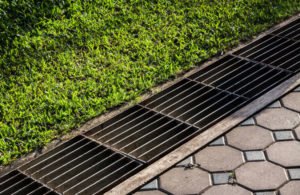



Leave a Reply